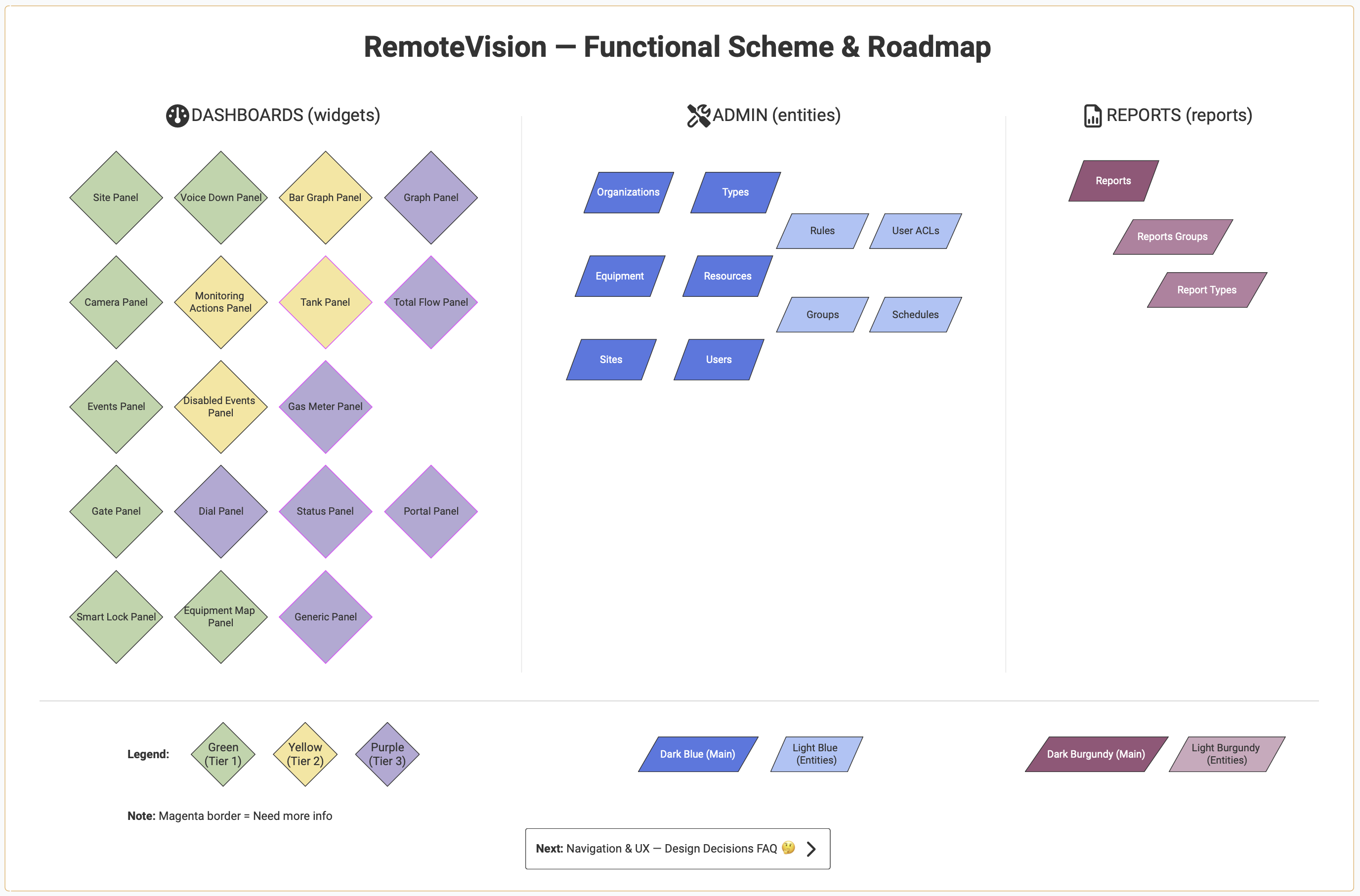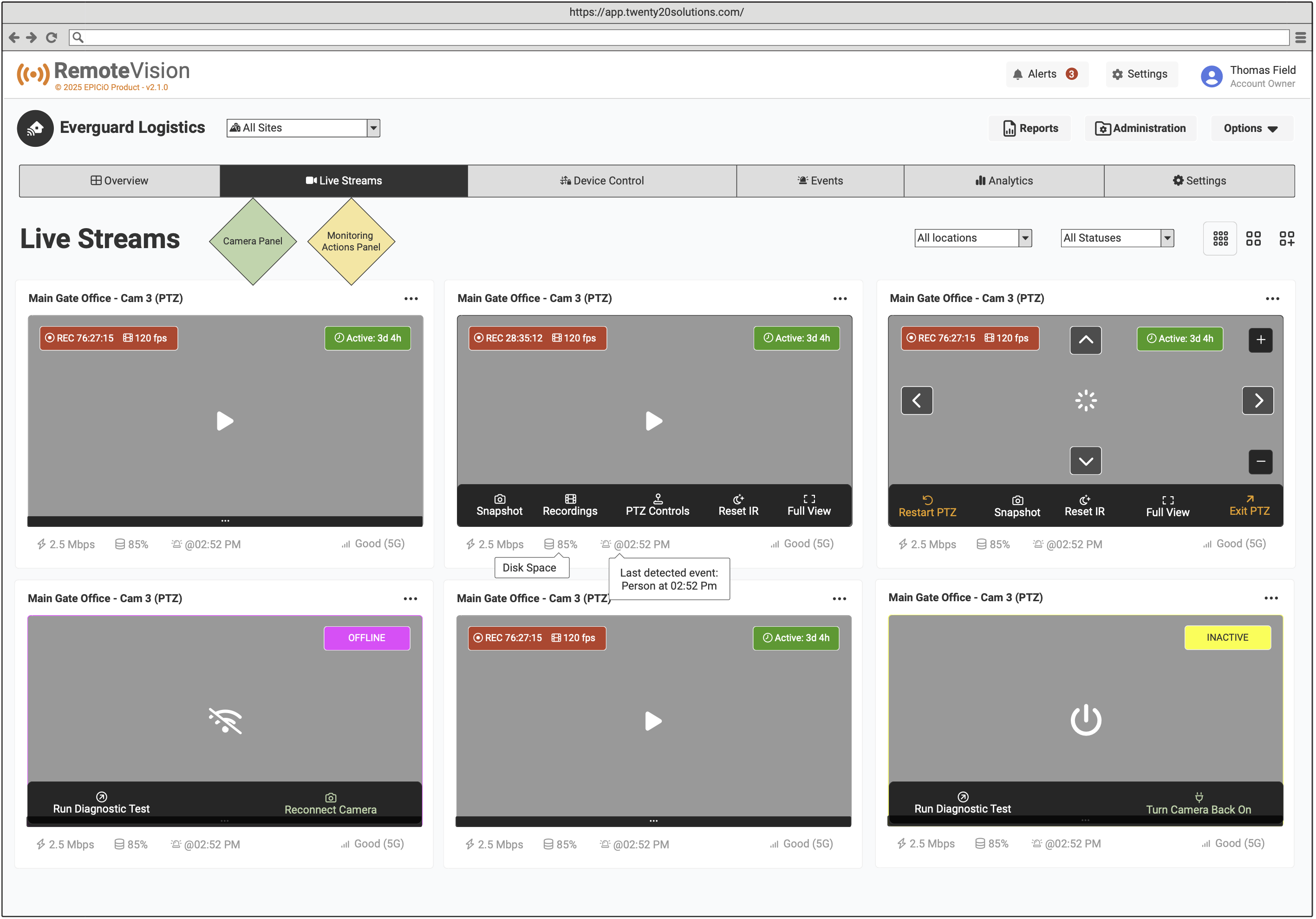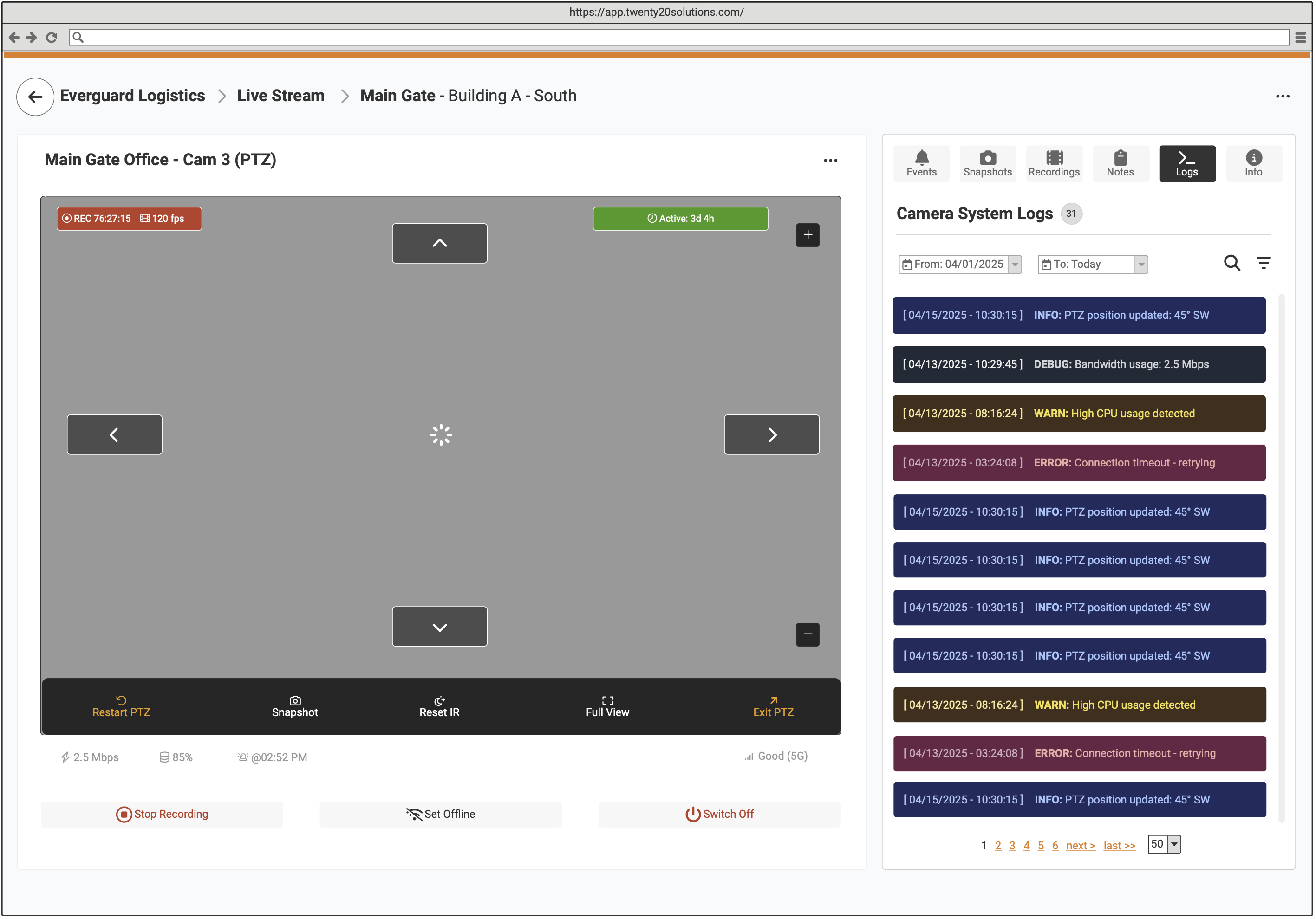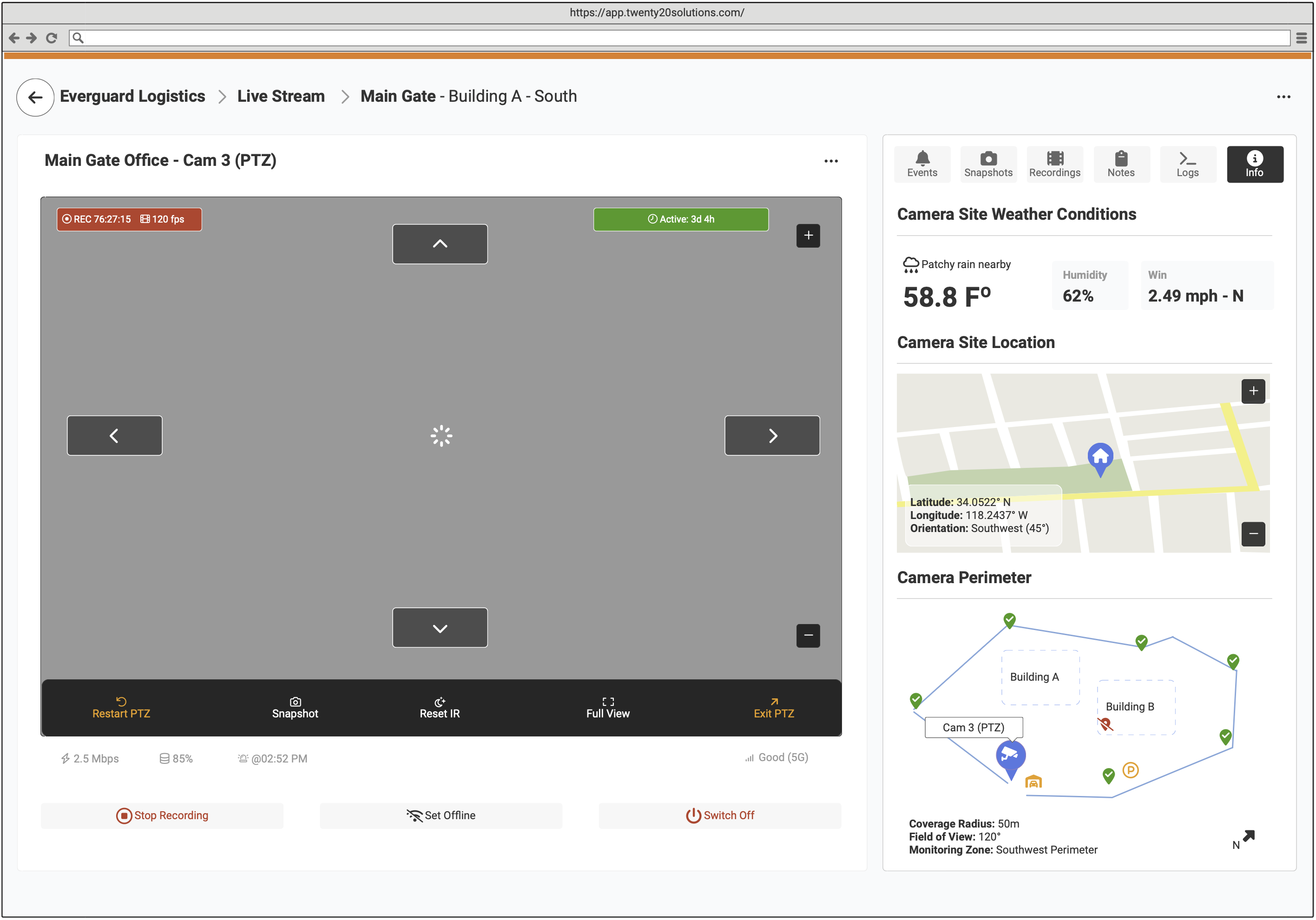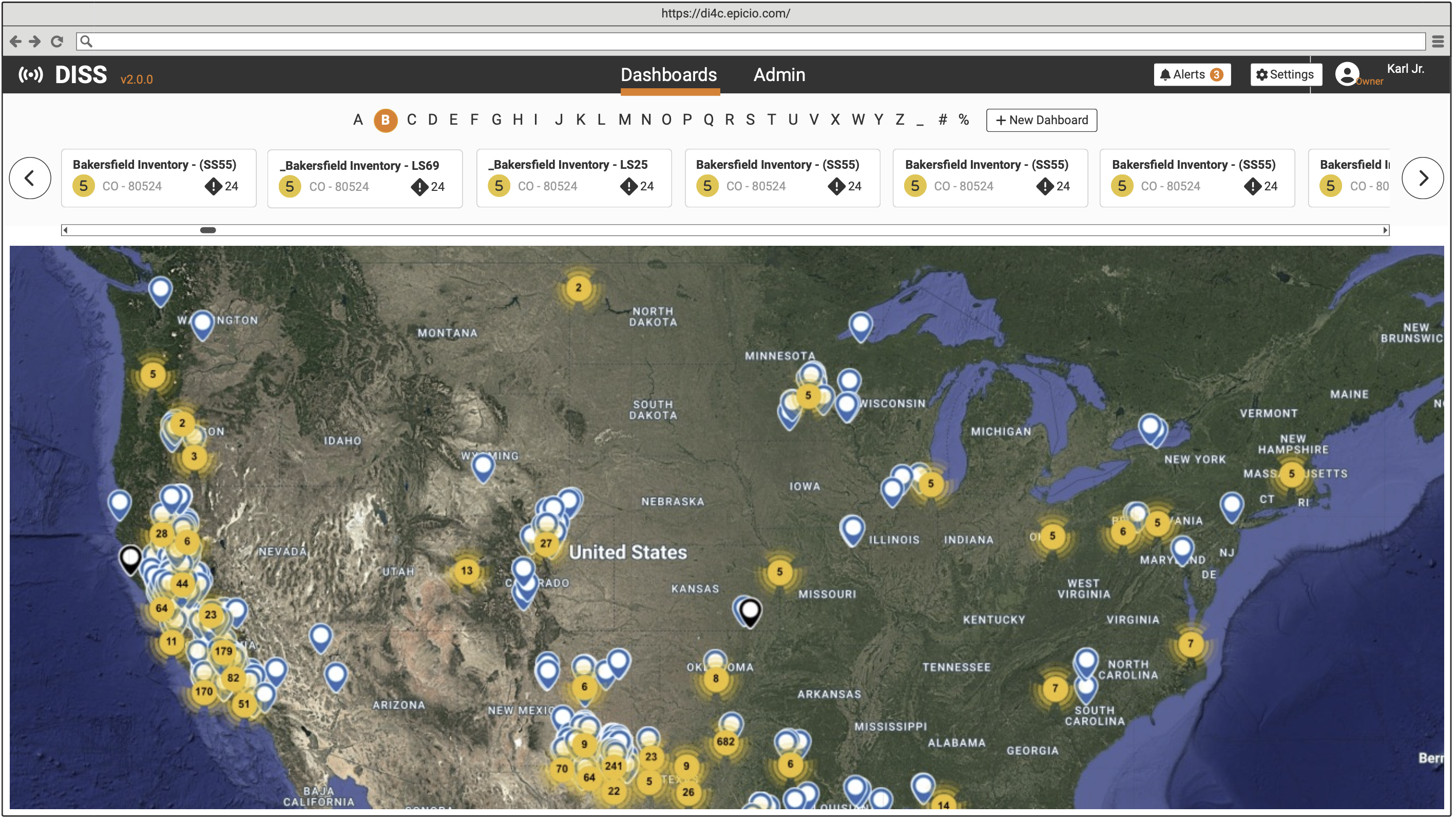EPIC iO — RemoteVision UX Research & Wireframes
Early-stage UX research and wireframing effort for EPIC iO's RemoteVision platform — defining its structure, user roles, and information architecture to evolve legacy monitoring tools into a scalable, modern system.
Heuristic Analysis & Structural Design
This phase defined RemoteVision's UX architecture through heuristics, stakeholder input, and journey mapping. The findings shaped the IA and Balsamiq wireframes refined in FigJam, producing a validated structure ready for UI implementation.
Project Overview
RemoteVision was an exploratory UX phase for EPIC iO's upcoming monitoring platform, intended to unify and modernize the company's legacy product WirelessWindows. The objective was to define the system's information architecture and produce functional wireframes that could guide future design and development efforts.
As UX Designer, I led research, information architecture mapping, and low-fidelity wireframe creation to establish a documented foundation that would enable scaling the product toward a modern, cohesive solution.
Project Summary
Timeline & Team
2025
UX Designer (Research & Wireframing Phase)
Tools & Methodology
Wireframe, FigJam
Heuristic analysis, Information Architecture mapping, Low-fidelity wireframing
Key Deliverables
- • IA map defining product structure and relationships
- • Low-fidelity wireframes covering core navigation and interaction flows
- • Role-based usage model for client and uNOC teams
- • UX documentation for future implementation teams
Performance Metrics
At the time of my participation, no quantitative performance metrics were collected, as the project remained in the research and structural design phase.
Future evaluations were planned to validate usability, efficiency, and task flow optimization once development reached implementation.
Problem Statement
The project faced three main challenges:
- Legacy fragmentation: WirelessWindows lacked logical grouping between monitoring, device, and analytics modules.
- No design baseline: There was no prior documentation or UX structure to guide modernization.
- Multiple user contexts: The same interface served external clients and internal uNOC operators with conflicting needs.
Challenge
The main challenge was to produce a clear, scalable UX model without prior visual assets, user data, or defined workflows — creating order from an undocumented system while maintaining flexibility for future technical evolution.
Without existing design references or usage metrics, the project required reconstructing the system's logic from scratch, identifying functional relationships and proposing a structure that could grow with the product.
Approach
Following a research and structuring methodology:
- Heuristic analysis: Evaluation of the existing WirelessWindows environment to identify patterns and limitations.
- Flow reconstruction: Mapping of system relationships and dependencies using FigJam.
- Low-fidelity wireframes: Creation of wireframes in Balsamiq Mockups representing essential navigation and layout logic.
- Dependency mapping: Documentation of functional relationships between modules, alerts, and dashboards.
- UX recommendations brief: Compilation of opportunities for scalability, responsiveness, and future design direction.
Solution
A new information architecture was defined that unified all platform areas under six main modules: Overview, Events, Devices, Analytics, Reports, and Settings.
- Separation of user experiences for Client and uNOC operations, aligned with real roles and access levels.
- Proposal of an updated navigation pattern replacing legacy sidebars with top-level menus to improve scalability and workspace clarity.
- Modular structure that allows future growth without compromising usability.
Result: a complete wireframe and information architecture package ready for the next UI design phase.
Results
A complete UX wireframe and information architecture package was delivered, ready for the next UI design phase.
The project clarified the product hierarchy and core relationships for cross-functional teams, establishing a documented UX foundation for a scalable monitoring ecosystem.
As of this publication, the project remains at the research and wireframing stage; its current implementation status is unknown.
Key Takeaway
Even without data or design maturity, early UX structure and clear documentation can transform ambiguity into a strategic blueprint for product growth.
This project demonstrated that establishing solid information architecture foundations and functional wireframes can create significant value before visual design begins, providing a clear roadmap for future implementation teams.
